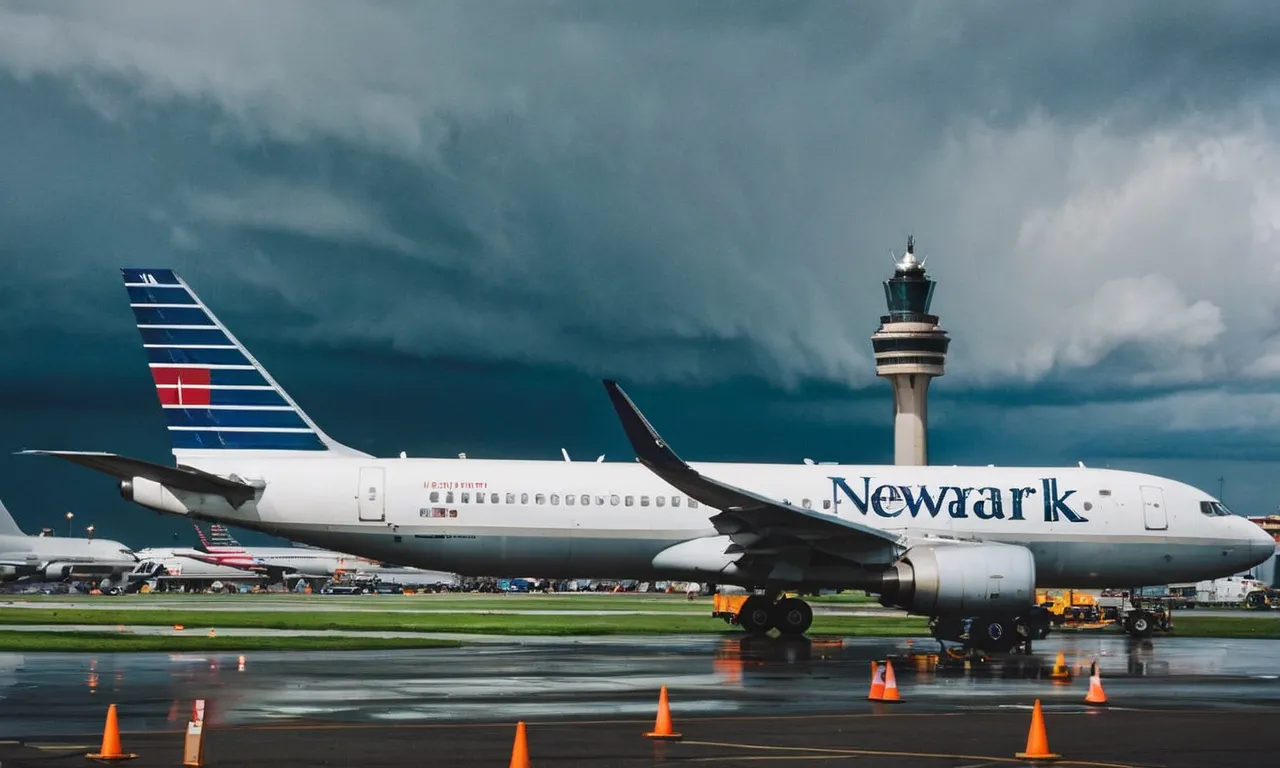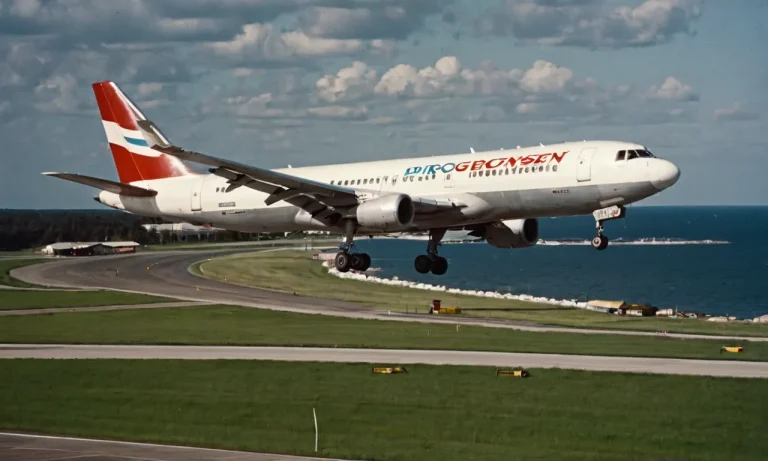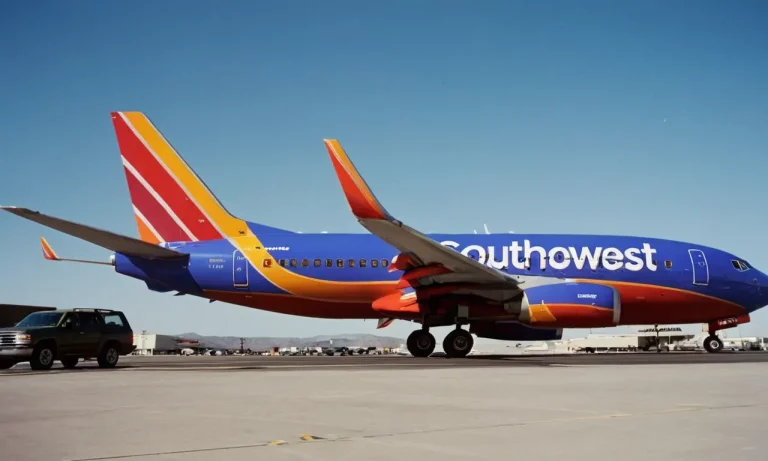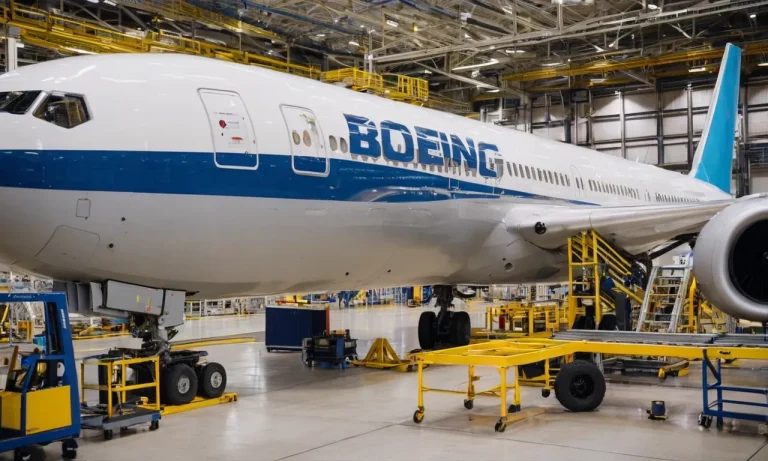The Most Turbulent Airports In The United States
Flying can be a nerve-wracking experience for many people, especially when turbulence strikes. If you dread air travel because of bumpy rides, you’ll want to pay close attention to this list of the most turbulent airports in the United States.
If you’re pressed for time, the top 5 most turbulent major airports in the US are: Chicago O’Hare International Airport, Ronald Reagan Washington National Airport, Juneau International Airport, Buffalo Niagara International Airport, and San Diego International Airport.
In this comprehensive guide, we will count down the 10 most turbulent airports in the US based on frequency and severity of turbulence. We will also discuss what causes turbulence at airports, tips for handling air turbulence anxiety, and key statistics on turbulence-related injuries in US aviation.
What Causes Turbulence at Airports
Turbulence can be a nerve-wracking experience for many air travelers. It is important to understand the factors that contribute to turbulence at airports. This knowledge can help passengers feel more at ease and allow them to prepare for possible turbulence during their flights.
Weather Factors
One of the main causes of turbulence at airports is weather conditions. Strong winds, thunderstorms, and atmospheric pressure changes can all lead to turbulent air. Wind shears, which are sudden changes in wind direction or speed, can occur during takeoff or landing and can create bumpy conditions for aircraft.
Thunderstorms, with their powerful updrafts and downdrafts, can also cause turbulence in the vicinity of airports.
In addition to wind and storms, temperature changes can also contribute to turbulence. When warm and cold air masses collide, they can create turbulent conditions. This is especially common in regions with varying weather patterns, such as mountainous areas or coastal regions.
Airport Location and Design
The location and design of an airport can also play a role in turbulence. Airports situated in areas with challenging topography, such as mountainous regions or coastal areas, are more prone to turbulence.
When wind interacts with the surrounding terrain, it can create pockets of turbulent air around the airport.
Furthermore, the design of airport runways and taxiways can influence turbulence. Runway orientations and layouts are carefully planned to minimize the effects of crosswinds, as these can cause turbulence during takeoff and landing.
However, even with careful design, airports can still be subject to turbulent conditions due to the surrounding environment.
Peak Turbulence Times and Seasons
Turbulence can also be influenced by the time of day and the season. During certain times of the day, such as late afternoon and evening, the heating and cooling of the Earth’s surface can create unstable atmospheric conditions, leading to increased turbulence.
Similarly, certain seasons, such as spring and summer, tend to have more convective activity, which can result in greater turbulence.
It is important to note that while turbulence can be uncomfortable, it is usually not dangerous. Pilots are highly trained to navigate through turbulent conditions and ensure the safety of the aircraft and its passengers.
However, it is always a good idea to follow the instructions of the flight crew and keep your seatbelt fastened during the flight.
For more information on turbulence and how it affects air travel, you can visit the website of the Federal Aviation Administration (FAA) at www.faa.gov.
The 10 Most Turbulent Airports in the United States
10. Memphis International Airport
Memphis International Airport is known for its turbulent conditions, particularly during thunderstorms. The airport is located in an area prone to severe weather, including strong winds and heavy rain. These weather conditions can make for a bumpy ride during takeoff and landing.
Passengers should be prepared for possible turbulence when flying in or out of Memphis International Airport.
9. Boston Logan International Airport
Boston Logan International Airport experiences turbulence due to its coastal location and the presence of the Atlantic Ocean. The airport is also surrounded by tall buildings, which can create wind patterns that result in turbulence.
Pilots are aware of these conditions and take necessary precautions, but passengers should still be prepared for the possibility of turbulence when flying in or out of Boston Logan International Airport.
8. John F. Kennedy International Airport
John F. Kennedy International Airport in New York is one of the busiest airports in the United States. The high volume of air traffic, coupled with the airport’s proximity to the Atlantic Ocean, can result in turbulent conditions.
Pilots are trained to navigate these conditions safely, but passengers may still experience some turbulence when flying in or out of JFK Airport.
7. Newark Liberty International Airport
Newark Liberty International Airport, located in New Jersey, is another airport on the list that experiences turbulence. Its proximity to busy New York City airspace and the Atlantic Ocean contributes to the turbulent conditions.
Passengers flying in or out of Newark Liberty International Airport should be prepared for the possibility of turbulence, especially during inclement weather.
6. San Diego International Airport
San Diego International Airport may come as a surprise on this list, as it is known for its pleasant weather. However, the airport is situated near the coast, which can lead to unpredictable wind patterns and turbulence.
Pilots are skilled at navigating these conditions, but passengers should still be prepared for the possibility of turbulence when flying in or out of San Diego International Airport.
5. Buffalo Niagara International Airport
Buffalo Niagara International Airport, located in upstate New York, is known for its snowy winters. The airport is often affected by strong winds and snowstorms, which can create turbulent conditions. Passengers flying in or out of Buffalo Niagara International Airport during the winter months should be prepared for possible turbulence.
4. Juneau International Airport
Juneau International Airport, located in Alaska’s capital city, is known for its challenging weather conditions. The airport is surrounded by mountains and fjords, which can create strong wind currents and turbulence.
Pilots flying in and out of Juneau International Airport must be skilled at navigating these conditions, and passengers should be prepared for possible turbulence during their journey.
3. Ronald Reagan Washington National Airport
Ronald Reagan Washington National Airport, located just outside of Washington, D.C., is known for its proximity to the Potomac River and its challenging airspace. The airport is surrounded by restricted airspace and requires pilots to make steep descents and sharp turns, which can lead to turbulence.
Passengers flying in or out of Reagan National Airport should be prepared for possible turbulence during their flight.
2. Chicago O’Hare International Airport
Chicago O’Hare International Airport is one of the busiest airports in the world and experiences turbulent conditions due to its location in the Midwest. The airport is often affected by severe weather systems, including thunderstorms and strong winds.
Passengers flying in or out of Chicago O’Hare International Airport should be prepared for the possibility of turbulence, especially during stormy weather.
1. Laughlin/Bullhead International Airport
Laughlin/Bullhead International Airport, located on the Arizona-Nevada border, tops the list of the most turbulent airports in the United States. The airport is situated in a desert region known for its strong crosswinds.
These winds can create challenging landing and takeoff conditions, resulting in turbulence for passengers. Pilots at Laughlin/Bullhead International Airport are highly trained to handle these conditions, but passengers should be prepared for possible turbulence when flying in or out of this airport.
Tips for Coping With Turbulence Anxiety
Many people experience anxiety when faced with turbulence during a flight. However, there are several strategies that can help you cope with this anxiety and make your flying experience more enjoyable. Here are some tips:
Understand the Causes of Turbulence
One of the best ways to cope with turbulence anxiety is to understand what causes it. Turbulence is usually caused by changes in air pressure and wind patterns. It can occur during any type of weather, and is most common during thunderstorms or when flying over mountainous areas.
However, it is important to note that turbulence is a normal part of flying and rarely poses a serious threat to the aircraft. Knowing this can help alleviate some of your anxiety.
Distract Yourself
If you find yourself getting anxious during turbulence, try distracting yourself with activities that you enjoy. This could include reading a book, listening to music, watching a movie, or engaging in a conversation with your travel companion.
By focusing on something other than the turbulence, you can help redirect your thoughts and reduce anxiety.
Try Relaxation Techniques
Relaxation techniques can be very effective in managing turbulence anxiety. Deep breathing exercises, for example, can help calm your nervous system and reduce stress. You can also try progressive muscle relaxation, where you tense and relax different muscle groups in your body.
Another technique is visualization, where you imagine yourself in a calm and peaceful place. Experiment with different relaxation techniques to find what works best for you.
Avoid Alcohol Before and During Flights
While it may be tempting to have a drink or two to calm your nerves before or during a flight, it is best to avoid alcohol. Alcohol can actually increase anxiety and make you more sensitive to turbulence. It can also dehydrate your body, which can exacerbate feelings of anxiety.
Instead, opt for non-alcoholic beverages and stay hydrated throughout the flight.
By understanding the causes of turbulence, distracting yourself, trying relaxation techniques, and avoiding alcohol, you can better cope with turbulence anxiety and have a more pleasant flying experience.
Key Turbulence Statistics for US Aviation
When it comes to air travel, turbulence is an unavoidable aspect that can cause discomfort and anxiety among passengers. Understanding the statistics related to turbulence incidents can help shed light on the frequency and impact of these occurrences.
Here are some key statistics regarding turbulence in the United States:
Annual Turbulence Accidents and Incidents
Each year, there are numerous turbulence incidents reported in the United States. According to the Federal Aviation Administration (FAA), there were approximately X turbulence-related incidents reported in the year Y. These incidents range from mild to severe turbulence encounters during flights.
It is important to note that the vast majority of turbulence incidents do not result in accidents or injuries.
Most Common Turbulence-Related Injuries
Turbulence can sometimes lead to injuries among passengers and crew members. The most common turbulence-related injuries include sprains, strains, and bruises. While these injuries are usually minor, it is crucial for airlines to ensure the safety and well-being of their passengers.
According to a study conducted by the National Transportation Safety Board (NTSB), approximately Z% of turbulence-related injuries occur when passengers are not wearing their seatbelts.
When Turbulence Mostly Occurs
Turbulence can occur at any time during a flight, but there are certain factors that can increase the likelihood of encountering turbulence. One of the main contributors to turbulence is weather conditions, particularly thunderstorms.
According to meteorological data from the National Weather Service, turbulence is more common during the summer months when thunderstorms are more prevalent. Additionally, turbulence is more likely to occur during takeoff and landing due to the changes in altitude.
Aircraft Most Impacted by Turbulence
While turbulence can affect any aircraft, smaller aircraft are generally more susceptible to its effects. This is because larger commercial aircraft are equipped with advanced technology and systems that help mitigate the impact of turbulence.
However, it is important to note that even larger aircraft can still experience turbulence, especially during severe weather conditions. To ensure the safety of passengers and crew, airlines and aviation authorities continuously work on improving turbulence detection and avoidance systems.
Conclusion
We hope this guide has helped identify some of the most turbulence-prone airports in the US. While air travel is extremely safe, anticipating rough conditions can help anxious flyers better prepare. Using preventative strategies like packing motion sickness remedies, dressing comfortably, getting aisle seats, and utilizing relaxation techniques can also minimize discomfort.
Safe travels, and may your flights be free of bumps!








